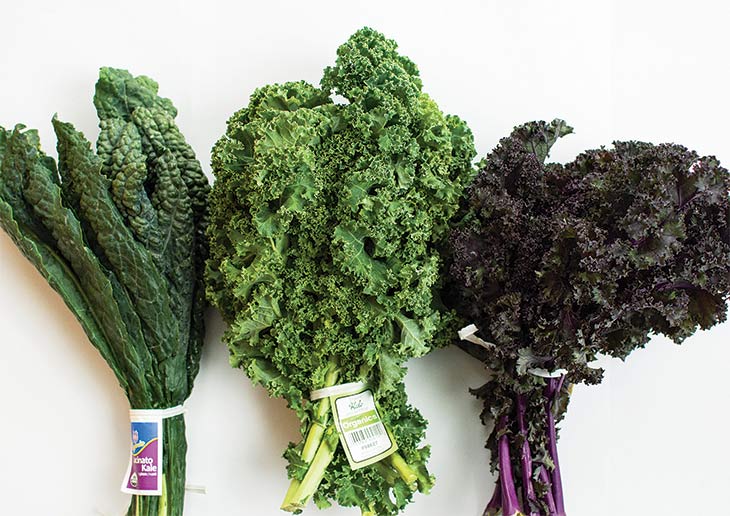If the cartoon character Popeye were revisited today, it’s likely that he’d be chugging cans of kale to boost his strength.
Indeed, while spinach has long been the king of greens, kale is now being crowned the queen. In recent years, the leafy green vegetable has been touted as a superfood that ounce for ounce packs a mighty nutritional punch. As a result, demand for this superstar veggie has risen dramatically.
“Fifty years ago in my grandfather’s day, kale wasn’t hugely popular and was produced mostly for the catering market, which used it as a garnish for food displays,” says southcentral Texas vegetable farmer and Capital Farm Credit customer Michael Adamek. “But due to its skyrocketing popularity in the past couple of years, we’ve seen a huge increase in demand. Today, about 25 percent of our winter crop is kale — that’s double what we were producing two years ago.”

Photo by Kanokwalee Pusitanun
There are many varieties of kale, but basically there are two types. Scotch types have graygreen and very curled and crumpled leaves while Siberian types are blue-green and less curled.
Today kale — an ancient foodstuff — is part of a hot food trend, with celebrities singing its praises in the media. It’s true that this veggie is an excellent, potent source of vitamin K, vitamin A, vitamin C, fiber, minerals and carotenoids — and that’s just to start. Research also has shown that kale contains 45 different flavonoids, with a variety of antioxidant and antiinflammatory effects.
Kale can be eaten raw when it’s young and tender, and it is so nutritious that even when cooked it is loaded with vitamins and minerals. If using mature kale, it’s best to remove the fibrous stems, and then chop the leaves. Add kale to soups and stews or just braise it in chicken broth for a few minutes as a side dish. It makes a wonderful addition to your food repertoire.
- Staff
Nutritional Content
One cup of chopped, cooked kale contains 33 calories, and the percent daily value of the following nutrients:
- calcium, 9 percent
- vitamin A, 206 percent
- vitamin C, 134 percent
- vitamin K, 684 percent
It is also a good source of the minerals copper, potassium, iron, manganese and phosphorus.
Health Benefits
A cruciferous vegetable, kale is a member of the Brassica family, along with broccoli, cauliflower and cabbage. Here are some of its health benefits:
- Helps lower cholesterol
- Is a detoxifying food
- Low in calories
- Rich in organosulfur compounds, which are known to fight cancer, especially colon cancer
- Contains high levels of sulforaphane, which helps nourish the immune system
- Acts like sunglasses for the eyes, because it’s abundant in the carotenoids lutein and zeaxanthin
- Supports normal blood clotting, antioxidant activity and bone health, because of its high level of vitamin K*
- Helps digestion because of its high fiber content
* Caution: Kale’s large concentration of vitamin K, which promotes blood clotting, can be a problem for people taking blood thinners such as Coumadin. Consult your doctor on the intake of vitamin K that’s right for you.
Kale Chips
These light and crunchy chips are sold in grocery stores, but are easy to make yourself!
- 1 bunch kale
- Olive oil spray
- Salt and pepper to taste
- Spices (optional)*
Heat oven to 350 degrees. Line cookie sheets with aluminum foil and spray with olive oil. Wash kale and remove stems. Cut or tear into bitesize pieces and pat dry. Spread the leaves in a single layer on a cookie sheet, making sure the leaves don’t overlap much. Spray the leaves with olive oil and sprinkle with salt and pepper to taste. Bake for 15 minutes.
*Spice It Up:
- Spicy Hot - sprinkle with cayenne powder
- Italian Style - add a dash of garlic powder, dried basil and grated parmesan cheese.
- Mexican Style - sprinkle with garlic powder, cumin, oregano and chili powder